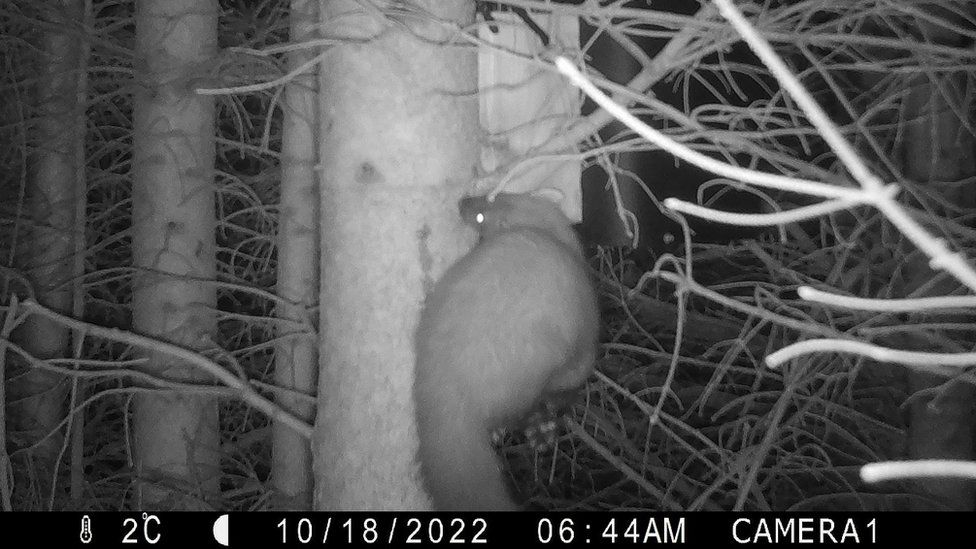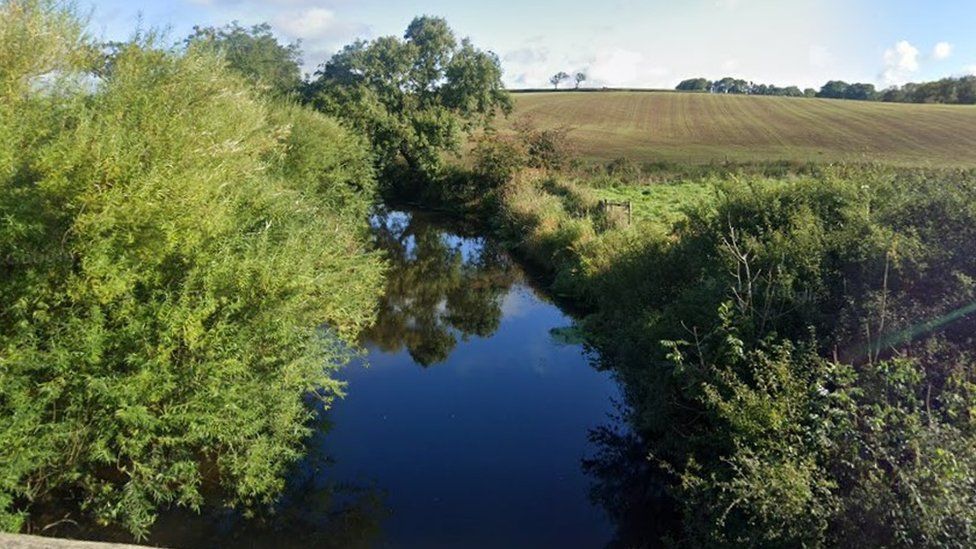A study of pine martens, one of the UK's rarest mammals, indicates that they may be expanding their range in the largest forest in England.
In Northumberland's Kielder Forest, the elusive animals were photographed five years ago.
Since then, sightings have increased, and in an effort to increase their numbers, Forestry England launched a project in February.
Ecologist Wayne Penrose stated: "The results are encouraging, but it is still early and more data are needed. ".
Because of habitat loss and fur hunting, pine martens were once believed to be extinct in England.
Since the forest was planted in 1926, they had not been seen there until 2018.
A few months prior, one was seen on camera close to Rothbury, marking the county's first known sighting of one in more than a century.

The animals are typically nocturnal hunters and build dens high in the trees.
50 denning boxes were installed as part of the Kielder project one year ago in a section of conifer forest.
To allow wildlife experts to evaluate the effects of providing the animals with housing, a different area 15 miles (24 km) away was investigated, but this time there were no boxes.

Pine martens investigating the denning boxes were soon caught on camera by covert equipment.
Researchers collected droppings from both areas when they examined the boxes in the fall, and DNA tests revealed that the droppings came from pine martens.
Mr. Penrose continued, "Four of the boxes clearly showed martens using them for denning.".
In fact, a camera that was just 24 hours old when it was installed captured a curious animal looking into a den.

We also looked for marten scats (droppings) at predetermined locations near the boxes and discovered almost four times as many as was noted the previous year.
Pine marten evidence increased, albeit not to the same extent, in the area devoid of boxes, continuing an upward trend.
"Everyone is buzzing about the sudden activity around the boxes. ".
Pine martens, which are weasels, have a bushy tail and can grow up to two feet long.
They consume small rodents, birds, beetles, eggs, fungi, berries, carrion, and scats, which they leave behind to mark their territory and attract other martens.







